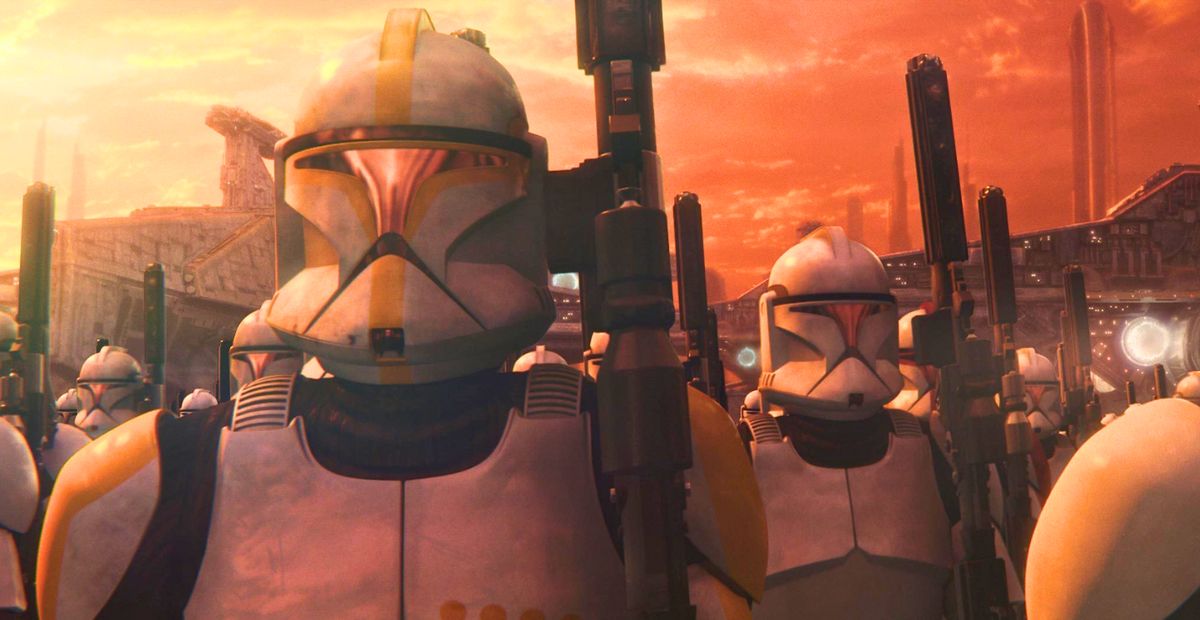If you’ve ever wondered how the heck any of those troopers tell each other apart, you’re not alone. When they’re not rocking colorful custom paint jobs or unique armor mods, clone troopers, especially in their early Phase I armor, look nearly identical. Same face, same voice, same gear. So, how do they know who’s who on the battlefield?
Turns out, it’s not just about paint or fancy helmets. There are actually a bunch of ways clones tell each other apart, from subtle armor tweaks to voice inflection and even good old-fashioned clone intuition.
Clone Helmets Made Sure You Always Knew Who Was Who
You ever wonder how the clone troopers, especially the ones with no fancy colors or custom paint jobs, know who’s who in the middle of a chaotic battlefield? I mean, you’ve got squads of genetically identical soldiers in near-identical armor, it’s gotta get confusing, right?
Well, that’s where their helmet tech comes in. The helmets came equipped with a heads-up display (HUD), kind of like what you’d see in a fighter jet. This thing could show vitals, targeting data, squadmate locations, and even link to their blasters for pinpoint accuracy. Basically, each clone could keep track of his team in real time through identifiers in the HUD, so even if two troopers looked the same on the outside, they’d show up differently through the visor.
We actually see this in canon too, not just games or Legends material. In the Clone Wars episode “Legacy of Terror,” there’s a moment where we see from Cody’s point of view, and sure enough, it shows the HUD display, just like in the old Republic Commando game.
And in The Bad Batch, during the “Reunion” episode, we get a similar glimpse through Hunter’s helmet. The HUD layout is different since his gear is custom, but it’s still doing the same job—giving him info, tagging enemies, and keeping tabs on his team.


Their HUDs Did Way More Than Just Help Them Recognize Each Other
But it didn’t stop at tagging friendlies. These helmets were packed with tech that made them walking war machines. For starters, they had built-in comlinks, so clones could stay in constant contact without shouting over blaster fire. Whether it was talking to the squad, getting orders from a Jedi General, or coordinating with gunships overhead, the helmet made it seamless. Some even had long-range encrypted channels so commanders like Rex or Cody could stay synced with GAR command.
They also came with filtration systems for hazardous environments. Whether it was Geonosis dust storms or poison gas from Separatist droids, the helmet sealed up tight and filtered the air. Phase II armor took this a step further with improved breath filters and more ergonomic seals. It’s how clones could operate in all kinds of biomes without worrying about choking on toxins or debris.
Visually, the helmets were insane. Beyond night vision and enhanced optical zoom, they could filter infrared and electromagnetic signals, letting clones see through smoke or track heat signatures in the dark. This wasn’t sci-fi exaggeration; in The Clone Wars, there are moments where clones pick out droids in low light or hostile terrain using this tech.
And for squad identification? The helmets were linked to command networks and displayed a trooper’s name, rank, and health status in real time. If someone went down, nearby troopers would see it instantly. It’s why a clone could sprint through a battlefield, pass three identical soldiers, and still toss a medpack to “Fives” without blinking.
Boba Fett Gave Us a Look at What Clone Helmets Look Like When the HUD Powers Down
In The Book of Boba Fett, there’s a moment during his escape from the Sarlacc pit that quietly gives us something fascinating. As Fett claws his way up from the sand and looks toward the sky, we see the world through his helmet’s HUD. For a brief moment, it flickers and shuts down, giving us a rare look at what the inside of a Mandalorian-style helmet actually displays.
This isn’t just cool from a cinematic standpoint—it gives us a glimpse into how clone troopers may have seen their surroundings. After all, clone armor was heavily based on Mandalorian designs, thanks to Jango Fett’s influence. It’s not a stretch to assume the Phase I and Phase II helmets used similar HUD technology.
That means even plain-armored clones probably had heads-up displays showing unit markers, squad info, or visual tags that helped them identify each other in battle. They didn’t need colors or patterns to know who was who—because their helmets were doing part of the work.

